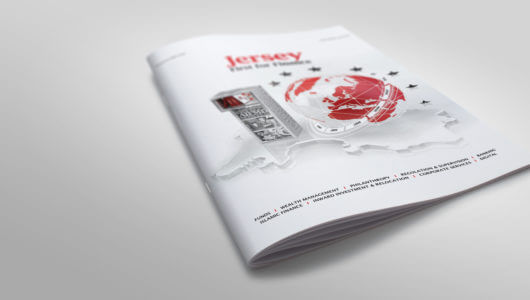Growth of 40% in new listings on The International Stock Exchange (TISE) in 2017 speaks for itself in terms of how the exchange’s flexible and responsive offering is being received in the market.
More than 2,400 securities are now listed with a total market capitalisation of more than £300 billion – securities listed include trading companies, specialist debt, investment vehicles and special purpose acquisition companies.
Last year’s growth is attributed by the exchange to several categories of listing, among them high yield bonds and Real Estate Investment Trusts (REITs) and the prospects for the UK REITs continue to be very positive in 2018.
One recent estimate of 2017 investment in London real estate refers to an increase of 35% to almost £24 billion over the course of the year, helped along by two landmark transactions: the £1.28 billion purchase of the ‘Walkie Talkie’ by the Hong Kong-based Lee Kum Kee Group and the £1.15 billion acquisition of the ‘Cheesegrater’ by CC land.
To put things into an international context, that total transaction value of £24 billion was around 50% higher than the estimate for New York real estate investment over the same period and this despite the uncertainty created by Brexit.
Aside from the clear trend of international investors benefitting from currency fluctuations to enhance value in UK acquisitions, there is also a clear statement of confidence in the long-term prospects of UK real estate assets.
As infrastructure investment into and around the capital is continuing, it seems as though UK real estate – and London real estate in particular – has not yet hit the top of the market.
The £56 billion HS2 project and the £14.8 billion Crossrail project promise not just to contribute to growth in the real economy through the multiplier effect but also have the potential to deliver further value generation in UK real estate.
They are not the only large scale capital investments – improved rail links that can carry passengers from Warwickshire to Euston in under 45 minutes have effectively put whole new regions within commuting distance of London.
All of this implies positive news for real estate, including UK REITs and by extension TISE, which is positioned to enable this investment.
UK REITs were introduced in 2007 to encourage investment in UK real estate – they can be UK or Jersey companies but must be UK tax resident, although they do not pay tax on profits arising from property investments. Crucially, they must also be listed on an HMRC-recognised exchange such as TISE. It is worth noting that 25% of UK REITs today utilise a TISE listing and 50% of those are companies incorporated in Jersey but managed and controlled in the UK.
The recognition of TISE’s regulatory standards and oversight by HMRC – much like the recognition from the German and Australian authorities, as well as the International Organisation of Securities Commissions and the World Federation of Exchanges – provides validation to investors that they have an appropriate level of protection. That combination makes REITs a gateway for inbound infrastructure and real estate investment into the UK, supporting economic growth in related industries.
For those international investors, TISE is an attractive proposition, as it offers comparatively low fees, quick turnaround and proportionate and pragmatic regulation appropriate to the commercial needs of the specific project.
The general rule that 25% of a listed company’s shares be held in public hands does not apply to TISE-listed REITs and reforms to UK rules mean that joint venture, club investment or single investor institutional REITs are eligible to be listed on TISE.
Where REITs are being established without the need to access as large a pool of investors as a London main market offering – for example – and where managers do not need to access substantial external capital, more and more asset managers are looking to TISE as a solution to their securities listing needs.
Neither TISE nor REITs are a new proposition, with 20 and 10 years’ track record and market history respectively. What is new is the combination of commercial circumstances and recent rules reforms that could make them 2018’s leading structure for inbound institutional investment into the UK.
TISE listings – growth and opportunity
By Fiona Le Poidevin, CEO of The International Stock Exchange Group
There were 705 new listings on TISE during 2017, which was an increase of 203 (40%) on the previous year and took the total number of listed securities on the Exchange to 2,511 at the end of December.
This success has its roots in a number of changes we have made in previous years, including listing the parent company of the group on our own Exchange, increasing our marketing and business development activities, modernising the rules for listing both debt and investment vehicles and rebranding to The International Stock Exchange (TISE).
The rebrand reflects our wider ambitions for the future, as well as the fact that much of our existing business is global in nature, with investors from different parts of the world investing in a range of companies, including many with operations internationally.
This includes in the high yield space, where 56 companies issued 71 high yield bonds which listed on TISE during 2017. The introduction of the Market Abuse Regulation (MAR) across the EU from July 2016 has resulted in some high yield migrations from Ireland and Luxembourg but predominantly, we are attracting new issuances. A mix of private and public, European and US companies, including such high profile names as Netflix, have chosen to list high yield bonds on TISE.
TISE also received another international endorsement last year in receiving recognition from the German regulator, BaFin, which means that TISE-listed products are now eligible ‘listed’ investments for German insurance companies and mutual funds. Indeed, we have recently published a new report which showcases the way in which UCITS funds from all EEA jurisdictions can invest into TISE-listed entities. This is another demonstration of the way in which a listing on TISE can enhance the distribution of a product.
We are continually assessing new opportunities to enhance our offering and how we might grow the business in the future, including increasing the number of the trading companies which list on TISE.
Daniel Richards is a Partner in Ogier’s Jersey Banking and Finance team.
He is admitted in Jersey, Luxembourg and England & Wales and spent five years in Ogier’s Luxembourg team as co-founder before returning to Jersey in 2016.
Daniel has extensive experience in all aspects of private capital-structuring and finance in Jersey and Luxembourg. He acts for finance parties and private capital asset managers in relation to international investment structures across a broad range of asset classes.


